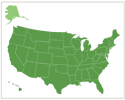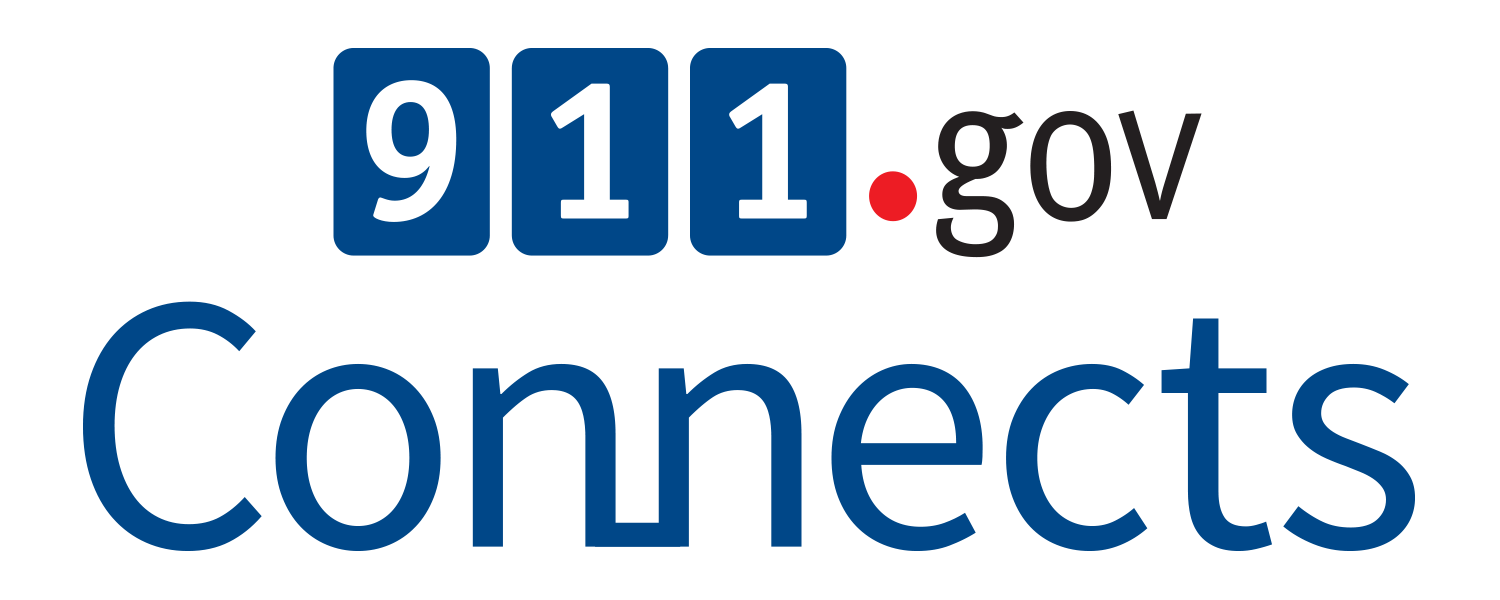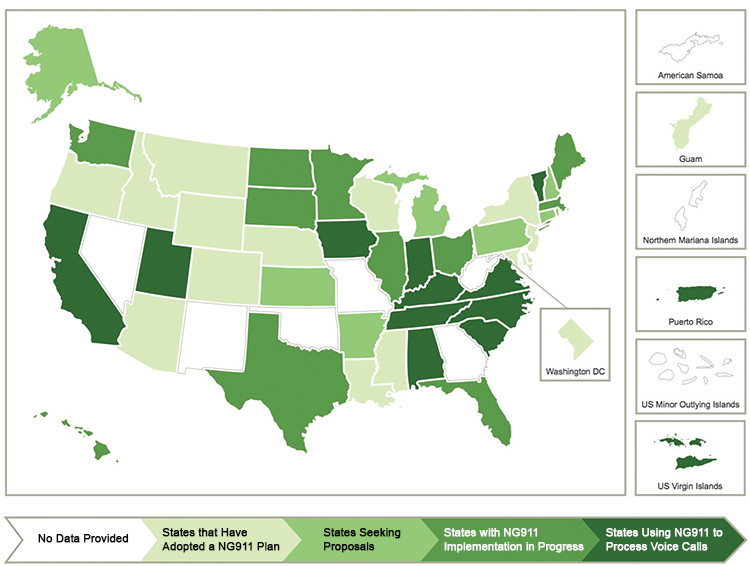NG911 Progress Across the U.S. Snapshot Now Available

The National 911 Program and the National Emergency Number Association (NENA) recently released data on state and territory progress toward Next Generation 911 (NG911) deployment.
The combined data, from the National 911 Profile Database and NENA’s NG911 database, provides a snapshot of each state and territory’s progress toward fully utilizing NG911 infrastructure and capabilities. A color-coded map (below) aims to communicate that advancement to others outside of the 911 community, such as legislators and public safety officials, at a glance. This quick overview helps to provide context for state progress across the nation.
All of the data displayed in the map is self-reported by the states and territories, and reflects progress toward fully implementing NG911 collected during 2014. To display the information in the most succinct way, data from sub-states and counties were combined with the overall state data, meaning that the highest level of achievement toward NG911 in any sub-state was reflected throughout the entire state, rather than shown at the county level. Representing the data in this manner reduces significant quantities of information to a quick view that can be shared with stakeholders outside of the 911 community.
Key takeaways from the data are:
Sixteen states, sub-states and territories in the lightest shade of green completed the first step toward implementing NG911, which is to adopt a plan that includes governance, funding, system components and operations strategies.
Eight states and sub-states completed the next step toward implementation, which is to seek proposals from vendors for defined statewide components for a NG911 system through the issuance of a Request for Proposal (RFP).
After seeking proposals from vendors, eleven states and sub-states awarded a contract for a NG911 component, such as a basic IP network, ESInet, application or transition component.
Thirteen states, sub-states and territories shown in the darkest shade of green reported having a fully operational NG911 system in which they are processing NG911 emergency calls for all service types, including wireline, wireless and VoIP.
Six states and three territories in white either did not provide data regarding their progress, or are considered inactive.
With continued participation in the data collection efforts at the state and national level, the 911 community works together to paint a clearer picture of the nation’s progress in implementing NG911. More information about the Profile Database and the Program’s support of NG911 is available at 911.gov




